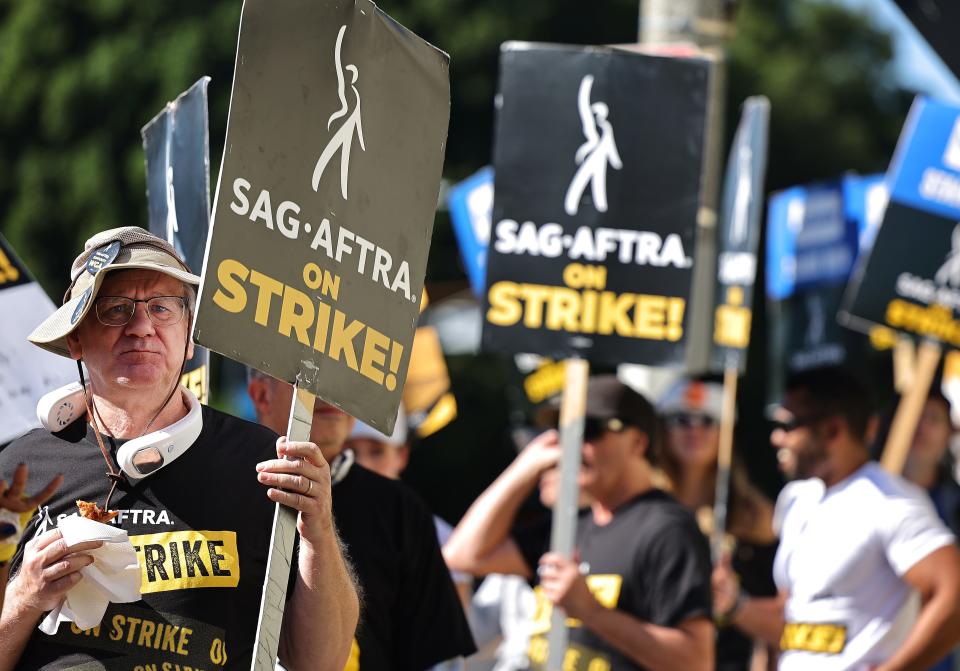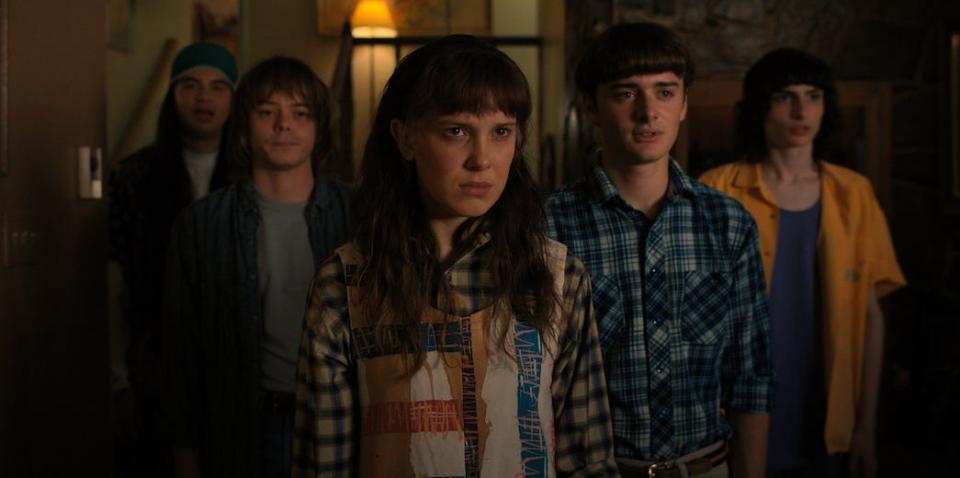SAG strike is over, but what's next? Here's when you can expect your shows and movies back
The Hollywood strikes are officially over.
Now that the Screen Actors Guild (SAG-AFTRA) has announced a deal with the Alliance of Motion Picture and Television Producers (AMPTP), which represents the major Hollywood studios, actors are just one step away from getting back to work. If, as widely expected, the union membership votes to authorize the deal the cameras can start rolling again.
Or can they? Scripted projects in Hollywood have been almost entirely shut down since May when the Writers Guild of America went on strike and was soon followed by SAG-AFTRA in July (the writers strike ended in October). Starting production again isn’t as simple as the actors showing up to work. TV series and movies require a lot of preparation before shooting happens, from scriptwriting to set building and costume design. Once all that preproduction work is done, there will be a scramble to get every show and film back to set at once, which could cause traffic jams at major filming locations and a greater demand for behind-the-scenes crew than can be met.

So what happens now that the strikes are over? And what does it mean for fans of TV and film? We answer your burning questions about a post-strike Hollywood. Spoiler alert: You’re still going to have to wait a while for some of your favorite series and movies.
Now that the actors and writers strikes are over, when will my broadcast TV shows come back?
Network TV may move fast, but it will still be a while until you see new episodes of most scripted series on the likes of ABC, NBC, Fox and CBS.
Although writers have been back at work churning out scripts since early October, the holiday season is looming fast, and traditionally the town shuts down in December. The traditional network TV season, which began Sept. 25 with reality competitions, game shows, reruns and imports, will be back to normal sometime this spring, likely in late February or early March. Shows like “Abbott Elementary,” “NCIS” and “Chicago Fire” will have shortened seasons of 10 to 13 episodes; their finales may extend into June from the traditional end of the season in mid-May. And some new shows planned for last fall will likely be pushed into the 2024-25 season.
What about streaming and cable series? When will they be back?
Streaming services and cable networks have a much longer lead time for their shows, so you may not even have noticed the subtle decline in the number of premiering shows (some due to a profit-driven cutback in what was known as "Peak TV"). But the pipeline has already started to dry up. Many streamers and networks have delayed the release of completed series (like FX's “Fargo”) to stretch out their schedule and fill gaps. Expect a gap in new shows in early 2024, reflecting the prolonged strike.

The gaps will keep coming and make a very lean year in 2024 as production slowly ramps up. The wait times will be long for some highly anticipated titles. Big, expensive productions like “Stranger Things,” which was due to start filming its fifth and final season just after the writers strike started, was already going to take a very long time. The sci-fi series requires complex post-production work, including computer-generated effects, so we might not see its new season until 2025.
What about the movies delayed by the writers and actors strikes?
Several movies and awards shows have been pushed back by the strikes, with some films delayed by years.
Disney postponed the release of the next three installments of James Cameron's blockbuster "Avatar" series: “Avatar 3” moves to Dec. 19, 2025, “Avatar 4” to Dec. 21, 2029, and “Avatar 5” to Dec. 19, 2031. Marvel has reshuffled its cinematic universe, with “Captain America: Brave New World” moving to July 26, "Thunderbolts" pushing back to Dec. 20, 2024, and “Blade” moving to Feb. 14, 2025.
Aside from delaying "Dune 2," Warner Bros. has moved "Godzilla x Kong: The New Empire" a month later, to April 12, 2024, while animated "Lord of the Rings: The War of the Rohirrim" is now slated for Dec. 13, 2024.
Sony moved “Kraven the Hunter" to Aug. 30, 2024 (Labor Day weekend), and “Spider-Man: Beyond the Spider-Verse” was taken off the release calendar for now. The untitled sequel to "Ghostbusters: Afterlife" moved to March 29, 2024. Oscar hopefuls "Challengers" and "The Bikeriders" have also been delayed to allow actors to promote them.
Now that the actors strike is ending, the delays won't be reversed, but studios will avoid further delays.
It's over!: Actors strike ends: SAG-AFTRA leadership OKs tentative deal with major Hollywood studios
Can actors come back to talk shows and movie premieres?
Yes! During the strike SAG-AFTRA members were prohibited from promoting work for the major Hollywood studios. That meant no appearances on talk shows, podcasts or at conventions, no red carpet premieres and no interviews with the media talking about their movies and TV shows (new releases from independent studios were given a waiver by the union). Now there will be a full-court press (pun intended) by celebrities and their publicists to promote the movies and TV shows after four months. And the lineups on late-night and morning talk shows will feature more famous faces and fewer comedians you haven't heard of.
Why did the actors strike end?
Ever since the writers' strike concluded in October, pressure has mounted on both SAG-AFTRA and the AMPTP to settle the actors' strike and get everyone back to work. It didn’t happen right away. After 2 ½ months without negotiating, SAG-AFTRA and the AMPTP first met on Oct. 2, but talks fell through when the AMPTP walked out on Oct. 11. Bargaining resumed on Oct. 24, and finally led to a deal on Nov. 8.
During the talks, the big points of contention were the use of artificial intelligence and “digital replicas” of actors; compensation for actors based on the streaming performance of their shows and movies; and a basic pay increase to keep up with inflation. In its statement announcing the settlement, SAG-AFTRA said the union achieved "a deal of extraordinary scope that includes 'above-pattern' minimum compensation increases, unprecedented provisions for consent and compensation that will protect members from the threat of AI, and for the first time ... a streaming participation bonus." The AMPTP called the agreement "a new paradigm."
Are the Hollywood strikes really over now?
Well, the two most major strikes are over, yes, but are all strikes done for good? Probably not.
SAG-AFTRA and the WGA have contracts in place for the next three years, but when those are about to expire expect a new round of negotiations. It’s impossible to predict if it will get to the point of striking again.
And they aren’t the only two unions in Hollywood. The International Alliance of Theatrical Stage Employees represents many behind-the-scenes crew members and technicians, and its contract with the AMPTP expires in 2024.
Contributing: Gary Levin , USA TODAY.
'Let's go!': Hollywood celebrates end of actors' strike on red carpets and social media
This article originally appeared on USA TODAY: SAG strike is done: When TV shows and movies will be back

